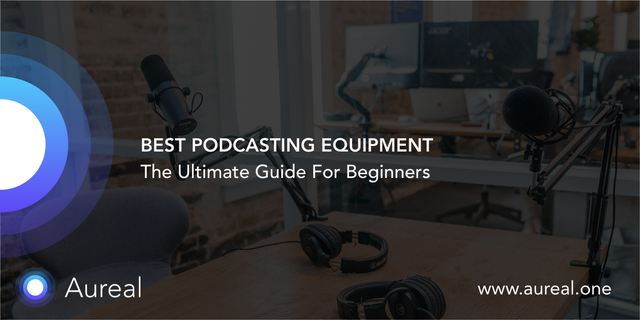Want to Start Your First Podcast? Here’s a Guide to the Equipment You’ll Need to Get It Up and Going

According to Musicoomph, there are 8,50,000 active podcasts in more than 100 languages, available to 56 billion podcast listeners every day. Starting a podcast has become more accessible and rewarding, but looking at these statistics can make you wonder if listeners would like to tune in to yours.
They surely won’t hesitate to switch if your podcast doesn’t have serviceable audio quality, lacking transitions or jingles, or is just an unmodulated vocal narration.
While you can start a podcast for free, that doesn’t imply you shouldn’t invest in your craft. Your script/content will impact your audience and inspire, but the sound of your fan definitely won’t!
Now that you know that your podcast shouldn’t just have great content, but sounds good too. Let’s get started with the guide for the equipment you’ll need.
Audio Recording Equipments:
Microphones:
There are two primary microphone choices to choose from (hoping that you didn’t consider speaking into your laptop or phone as an option).
USB Microphones: It’s cheap and of lower quality, but plugs directly to your computer, making it highly portable. They are one of the most popular types of microphones in the market, being the primary choice of vocalists and instrumentalists. These are designed to show off their prowess in a quiet, solo environment. The best budget-friendly options to choose from could be the Snowball, the Samson Meteor USB, and the Audio Technica ATR2100x. These microphones pick up sound from any direction, making it perfect for reading from scripts and hosting guest podcasts and interviews.
XLR Microphones: These microphones give you a better command over your audio quality using a mixer to control your sound. These are dynamic microphones, picking up the audio that is in line with them. They are inexpensive, only requiring you to invest more in the mixers while producing excellent audio quality. The beginners’ choice could be the Audio-Technica AT2020, the Shure SM58S, and the MXL 990 MIDNIGHT.
Mixer:
A mixer gives you total command over your audio, and it’s quality. It takes care of the modulations in your voice. It controls individual channels making your sound quality a treat to ears. It’s life-saving in times of chatting with a guest, as you may never know when the quiet, composed voice can turn to loud and unmodulated!
The best-budget friendly mixers to choose from are the Behringer XENYX 1202, and the Zoom H6(this is the most versatile and portable mixer).
Digital Audio Workstations aka DAWs:
Now that the recording is done, we need to create the cleanest and the most appealing sound to the ears. Editing the podcast the most time-consuming part of the podcast making the use of well-designed DAWs necessary.
Audacity:
Open-Source projects have given humankind a lot of cool things, including the fully-powered DAW, Audacity. It’s is one of the most recommended and user-tested audio editing software, representing its robust feature set.
It’s doesn’t have the best User Interface but packs a lot of punch inside it. Audacity is the one-stop solution to all your audio editing needs, complex audio processes, and more than capable of handling bigger projects.
Pro Tools | First:
Pro Tools is the choice of Hollywood sound artists. This free version can surely handle the expectations of it’s bigger brother. Apart from the generic editing tools, Pro Tools | First is packed up with mixing plugins like compressors, Equalizers, which can give your audio quality a great touch.
GarageBand:
Great things about it: pre-installed on all Mac platforms, free for iOS, and supports cross-platform audio sync.
GarageBand is the beginners’ choice containing royalty-free loops and effects that can make your podcast come alive. Pre-included jingles give an extra flavor to your podcast and keep your audience stuck to their earphones.
Visit aureal.one to sign up for beta access and know the latest podcasting trends!